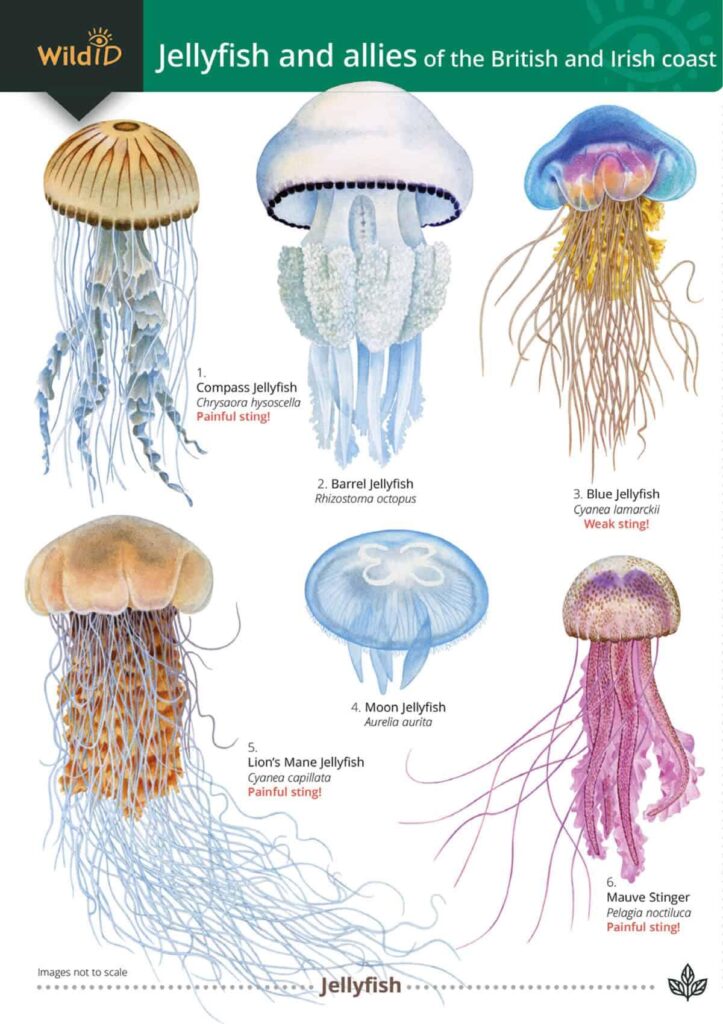Researchers in Japan have unveiled a remarkable new species of jellyfish, captivating marine biologists and enthusiasts alike. The newly discovered creature’s unique characteristics have inspired scientists to propose a name befitting the valor and mystique of a samurai warrior. This exciting find not only adds to the rich biodiversity of Japan’s coastal waters but also offers fresh insights into jellyfish evolution and ecology. The discovery, announced through EurekAlert!, highlights the ongoing efforts of Japanese researchers to explore and document the ocean’s hidden wonders.
Researchers in Japan Unveil Newly Discovered Jellyfish Species with Unique Samurai-Inspired Traits
In a groundbreaking marine discovery, scientists from Japan’s Oceanographic Institute have identified a previously unknown species of jellyfish exhibiting remarkable characteristics reminiscent of samurai warriors. This bioluminescent creature shows an unusual armor-like exoskeleton pattern on its bell, resembling the traditional plating seen on samurai armor. Unlike typical jellyfish, its tentacles are arranged with a precision that suggests evolutionary advantages for both defense and hunting, echoing the disciplined formation of samurai ranks. The researchers propose the jellyfish be named Samuraius lumina, paying homage to the ancient warrior’s spirit and the jellyfish’s glowing, sword-like appendages.
Key features that set this jellyfish apart include:
- Glowing armor pattern: Emitting light in intricate designs mimicking samurai crests.
- Rigid tentacle arrangement: Strategically spaced for enhanced mobility and capture efficiency.
- Enhanced regenerative ability: Allowing rapid recovery from injuries, akin to a warrior’s resilience.
| Trait | Description | Samurai Parallel | ||||||||||||||||||||||||||
|---|---|---|---|---|---|---|---|---|---|---|---|---|---|---|---|---|---|---|---|---|---|---|---|---|---|---|---|---|
| Exoskeleton Pattern | Bioluminescent crest-like formations | Clan insignia on armor | ||||||||||||||||||||||||||
| Tentacle Alignment | Orderly, compact arrangement | Disciplined battle formations | ||||||||||||||||||||||||||
| Regenerative Speed | Detailed Analysis Reveals Biological Features Linking Jellyfish to Legendary Samurai Qualities
In a groundbreaking study, Japanese marine biologists have uncovered remarkable biological traits in a newly identified jellyfish that evoke the virtues of a legendary samurai warrior. The creature’s structural resilience mimics the samurai’s armor, crafted to withstand powerful forces while maintaining agility in battle. Intriguingly, this jellyfish demonstrates a unique layered exoskeleton composed of bioluminescent compounds, which not only offer protection but also serve as a sophisticated communication system in the deep sea, much like the coded signals used by samurai on the battlefield. Further detailed analyses highlighted several key features that parallel samurai qualities:
Experts Recommend Conservation Strategies to Protect the Habitat of the Newly Identified Marine SpeciesMarine biologists and conservationists emphasize the urgent need to implement targeted protection measures following the discovery of this striking jellyfish species along Japan’s coastal waters. Experts advocate for establishing marine protected areas (MPAs) that limit industrial activities and fishing around the newly identified habitat to preserve its delicate ecosystem. Increased monitoring of water quality and human interference has also been highlighted as a critical step in safeguarding the species against pollution and habitat degradation. In addition to spatial protections, scientists suggest the adoption of community-led conservation programs to raise awareness and engage local fishermen and residents. Among the recommended strategies are:
Future OutlookThe discovery of this remarkable new jellyfish species not only enriches our understanding of marine biodiversity but also highlights the enduring influence of cultural heritage in scientific naming. As researchers in Japan continue to explore the depths of the ocean, such findings underscore the potential for future breakthroughs that bridge nature and tradition. Further studies will reveal more about the unique characteristics of this samurai-inspired jellyfish, offering insights into both its ecological role and evolutionary history. |
